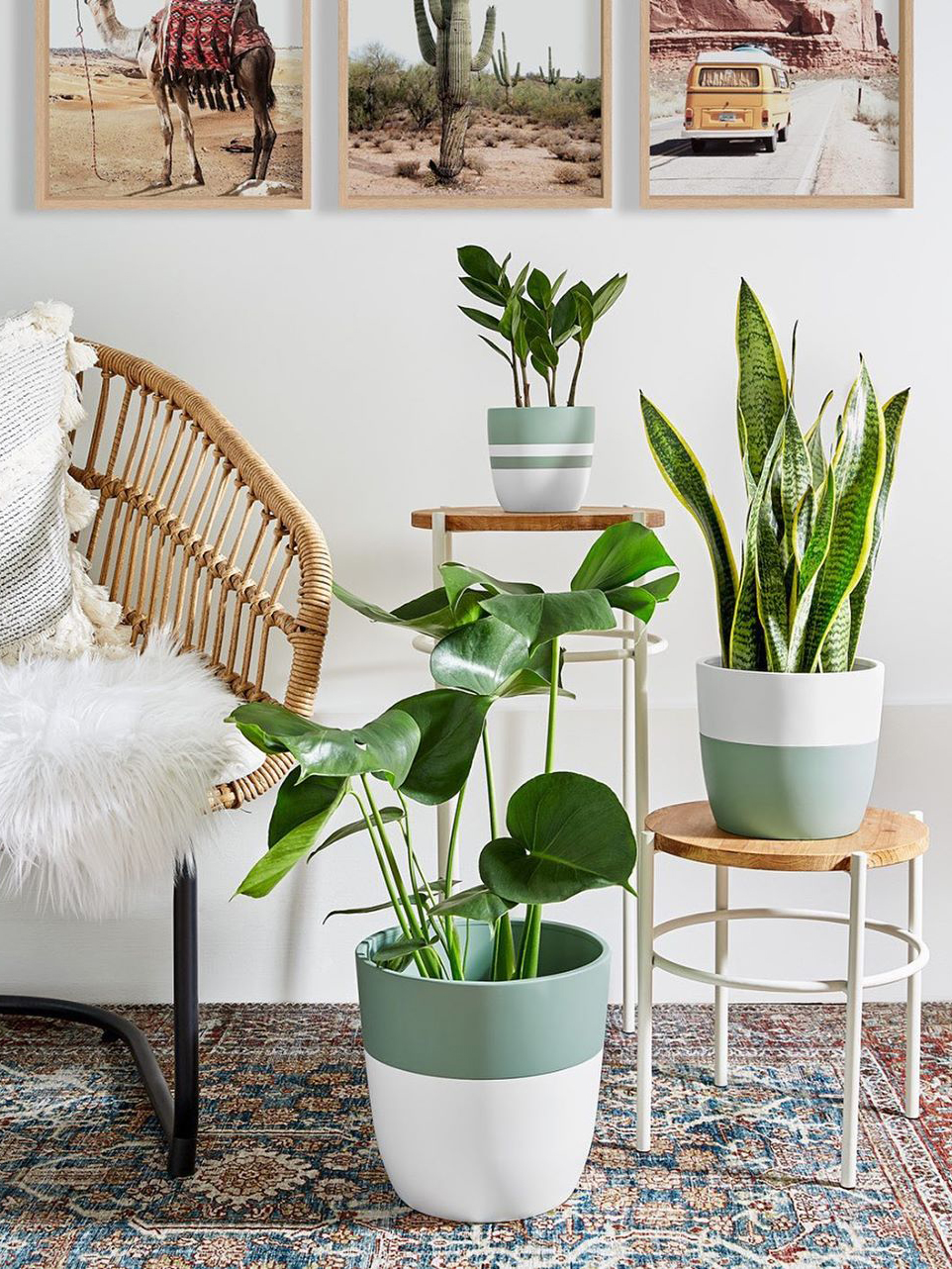We may earn revenue from the products available on this page and participate in affiliate programs.
The snake plant seems to have found a second home in stylish urban apartments. Famous for its sturdy, reptile-inspired leaves, the succulent native to tropical West Africa also goes by Saint George’s sword, mother-in-law’s tongue, and viper’s bowstring hemp, to name a few. Most important, it is just as laid-back as it is aesthetically pleasing.
“The snake plant is one of the most versatile houseplants around,” says Milana Naumenko, cofounder of New York City–based plant shop Water & Light. “It’s a survivor and will take all sorts of neglect.” Similar to the ZZ plant, it also tops NASA’s list of the best air-purifying plants—it releases a ton of oxygen, and it’s a great option for people who are allergic to dust and dander. If you’ve just entered plant parenthood with a budding Sansevieria trifasciata in tow (its scientific name), heed Naumenko’s expert care tips, below.
Pick any corner, and your snake plant will make itself at home.
A snake plant isn’t picky—it will thrive whether you place it in a dark corner or on a bright windowsill. “It can tolerate almost no light,” remarks Naumenko. “And it can also do well in very high indirect light, or even direct light, for a few hours per day.” However, she does caution against placing it in direct, tropical sunlight all day, every day: “If leaves are yellowing and withering, it’s probably getting sunburned.”
It is all about quick drainage.
In line with its natural hot and humid habitat, the snake plant prefers infrequent but gluttonous waterings and quick drainage. To mimic this, Naumenko recommends Water & Air’s regular potting soil, which is formulated with coconut coir, compost, and perlite. If your pot has no drainage holes, “add one to two inches of hydroton, or clay balls, to the bottom of the pot for maximum drainage,” she explains.
Water it even less in the winter.
As Naumenko notes, watering will vary depending on the time of year and sun exposure. “Water a snake plant every two to three weeks in the summer, and once every three to four weeks in the winter,” she says. “It is incredibly hardy—it can survive weeks without water.” Translation: It’s a perfect choice if you’re constantly traveling, always at the office, or straight-up forgetful.
Rotate it once a week to help it live its best life.
If you’re trying to give your plant the best home possible, Naumenko recommends rotating it every week or two, wiping the leaves with a damp paper towel, and regularly checking for pests. In the event of an infestation, spray the entire plant with organic pesticides or repot with fresh soil.
Look to the leaves for signs of distress.
“Under normal circumstances, your snake plant should live a long, happy life—you should even see new pups around the sides of the mother plant,” explains Naumenko. But in the event of a health crisis, the leaves will tell you what’s wrong. “If the leaves turn dark green and become squishy, your plant is being exposed to freezing temperatures,” she notes. Alternatively, “if there are dark spots on the leaves, it may be infected with a fungus or a bug—quickly cut out this leaf and dispose of it.” Happy plant parenting!
More plant stories: Madewell’s Joyce Lee Shares Her Winter Plant Hit List Every Sprout Thrives at This California Creative’s Magical Redwood Home Domino’s Executive Creative Director, Kate Berry, Grew a Garden in the Sky


